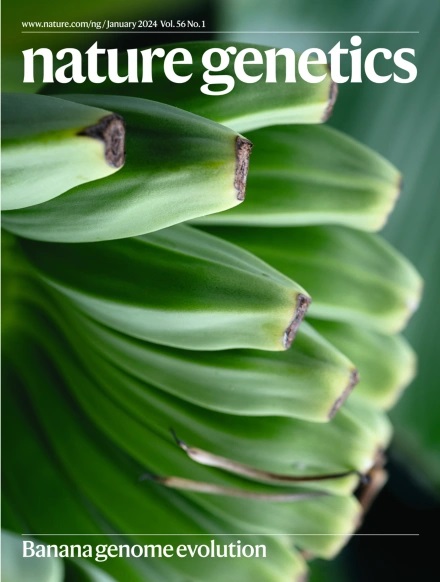Targeting histone H2B acetylated enhanceosomes via p300/CBP degradation in prostate cancer.
IF 29
1区 生物学
Q1 GENETICS & HEREDITY
引用次数: 0
Abstract
Prostate cancer is driven by oncogenic transcription factor enhanceosomes comprising chromatin and epigenetic regulators. The lysine acetyltransferases p300 and CREB-binding protein (CBP) are key cofactors that activate enhancers through histone acetylation. Here we identify p300/CBP-mediated multisite histone H2B N-terminal acetylation (H2BNTac) as a defining feature of oncogenic enhanceosomes in androgen receptor (AR)-positive prostate cancer. p300/CBP are essential for AR and ETS transcription factor ERG transcriptional activity, and their dual degradation eliminates H2BNTac and histone H3 lysine 27 acetylation at hyperactive enhancers, leading to stronger suppression of oncogenic transcription than targeting either paralog or bromodomain alone. Cytotoxicity profiling across >900 cell lines revealed that tumors with high H2BNTac, including AR-positive prostate cancer, are selectively dependent on p300/CBP. In preclinical models, systemic p300/CBP degradation inhibited tumor growth, synergized with AR antagonists and showed no evident toxicity. These findings position H2BNTac as an epigenetic marker of enhancer addiction and establish dual p300/CBP degradation as a promising therapeutic strategy for enhancer-driven cancers.靶向组蛋白H2B在前列腺癌中通过p300/CBP降解乙酰化增强体。
前列腺癌是由由染色质和表观遗传调节因子组成的致癌转录因子增强体驱动的。赖氨酸乙酰转移酶p300和creb结合蛋白(CBP)是通过组蛋白乙酰化激活增强子的关键辅助因子。在这里,我们发现p300/ cbp介导的多位点组蛋白H2B n端乙酰化(H2BNTac)是雄激素受体(AR)阳性前列腺癌中致癌增强体的一个决定性特征。p300/CBP对AR和ETS转录因子ERG的转录活性至关重要,它们的双重降解消除了H2BNTac和组蛋白H3赖氨酸27乙酰化在高活性增强子上,导致比单独靶向parog或bromodomain更强的抑癌转录。bbb900细胞系的细胞毒性分析显示,具有高H2BNTac的肿瘤,包括ar阳性前列腺癌,选择性依赖于p300/CBP。在临床前模型中,全身p300/CBP降解抑制肿瘤生长,与AR拮抗剂协同作用,无明显毒性。这些发现将H2BNTac定位为增强子成瘾的表观遗传标记,并将p300/CBP双降解作为增强子驱动型癌症的一种有希望的治疗策略。
本文章由计算机程序翻译,如有差异,请以英文原文为准。
求助全文
约1分钟内获得全文
求助全文
来源期刊

Nature genetics
生物-遗传学
CiteScore
43.00
自引率
2.60%
发文量
241
审稿时长
3 months
期刊介绍:
Nature Genetics publishes the very highest quality research in genetics. It encompasses genetic and functional genomic studies on human and plant traits and on other model organisms. Current emphasis is on the genetic basis for common and complex diseases and on the functional mechanism, architecture and evolution of gene networks, studied by experimental perturbation.
Integrative genetic topics comprise, but are not limited to:
-Genes in the pathology of human disease
-Molecular analysis of simple and complex genetic traits
-Cancer genetics
-Agricultural genomics
-Developmental genetics
-Regulatory variation in gene expression
-Strategies and technologies for extracting function from genomic data
-Pharmacological genomics
-Genome evolution
 求助内容:
求助内容: 应助结果提醒方式:
应助结果提醒方式:


